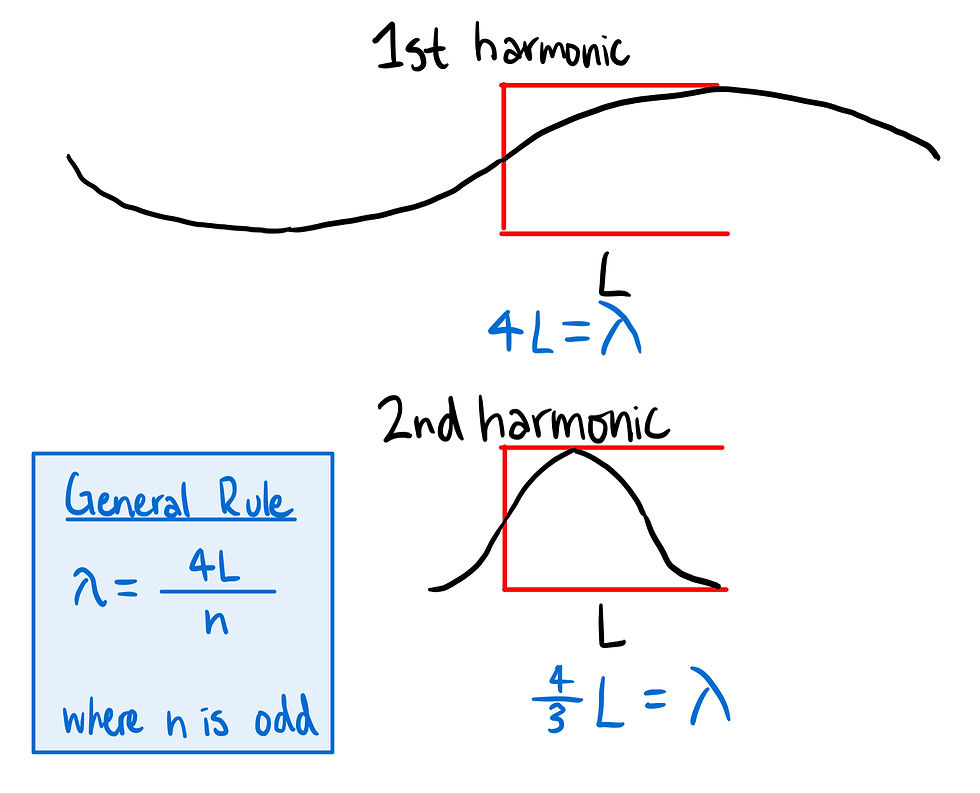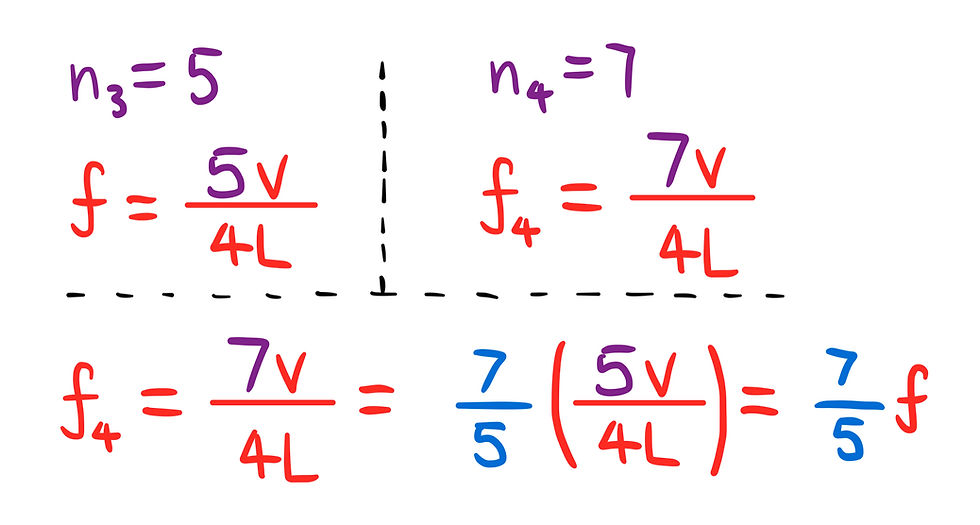PhysicsBowl 2016 Q27
- keshprad

- Jan 17, 2021
- 1 min read
27) In this question, we know the ƒ frequency tuning fork produces a third harmonic standing wave for a tube covered on one end. Now, we need to find the frequency needed for the fourth harmonic in terms of ƒ.
Let's start by looking at a tube of length L covered on one side. We can come up with this relation for lambda, the wavelength.

Note that n must be odd in a tube with one side covered. This means our 2nd harmonic actually corresponds to n=3, 3rd to n=5, 4th to n=7...
Using the general rule we have found and the wave equation, we can find an equation for the frequency of this wave.

Velocity(v) and tube length(L) will be constant between both situations, so n is our only variable in this situation.
At this point, we know that the frequency at the 3rd harmonic (n=5) is ƒ. We just need to solve for the frequency at the 4th harmonic (n=7) in terms of ƒ.

Answer: D




Comments